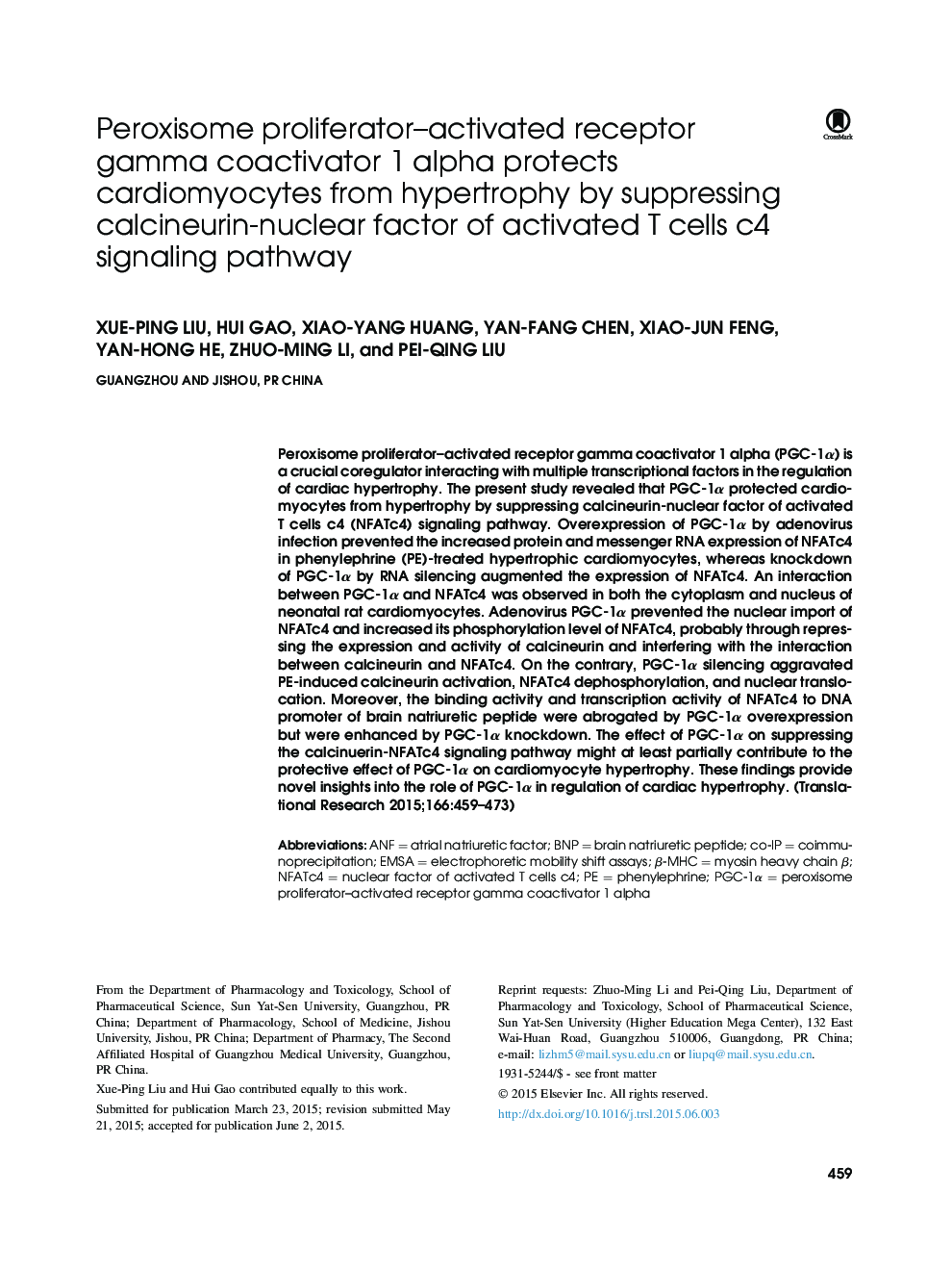| Article ID | Journal | Published Year | Pages | File Type |
|---|---|---|---|---|
| 3840308 | Translational Research | 2015 | 18 Pages |
Abstract
Peroxisome proliferator-activated receptor gamma coactivator 1 alpha (PGC-1α) is a crucial coregulator interacting with multiple transcriptional factors in the regulation of cardiac hypertrophy. The present study revealed that PGC-1α protected cardiomyocytes from hypertrophy by suppressing calcineurin-nuclear factor of activated T cells c4 (NFATc4) signaling pathway. Overexpression of PGC-1α by adenovirus infection prevented the increased protein and messenger RNA expression of NFATc4 in phenylephrine (PE)-treated hypertrophic cardiomyocytes, whereas knockdown of PGC-1α by RNA silencing augmented the expression of NFATc4. An interaction between PGC-1α and NFATc4 was observed in both the cytoplasm and nucleus of neonatal rat cardiomyocytes. Adenovirus PGC-1α prevented the nuclear import of NFATc4 and increased its phosphorylation level of NFATc4, probably through repressing the expression and activity of calcineurin and interfering with the interaction between calcineurin and NFATc4. On the contrary, PGC-1α silencing aggravated PE-induced calcineurin activation, NFATc4 dephosphorylation, and nuclear translocation. Moreover, the binding activity and transcription activity of NFATc4 to DNA promoter of brain natriuretic peptide were abrogated by PGC-1α overexpression but were enhanced by PGC-1α knockdown. The effect of PGC-1α on suppressing the calcinuerin-NFATc4 signaling pathway might at least partially contribute to the protective effect of PGC-1α on cardiomyocyte hypertrophy. These findings provide novel insights into the role of PGC-1α in regulation of cardiac hypertrophy.
Keywords
Related Topics
Health Sciences
Medicine and Dentistry
Medicine and Dentistry (General)
Authors
Xue-Ping Liu, Hui Gao, Xiao-Yang Huang, Yan-Fang Chen, Xiao-Jun Feng, Yan-Hong He, Zhuo-Ming Li, Pei-Qing Liu,
